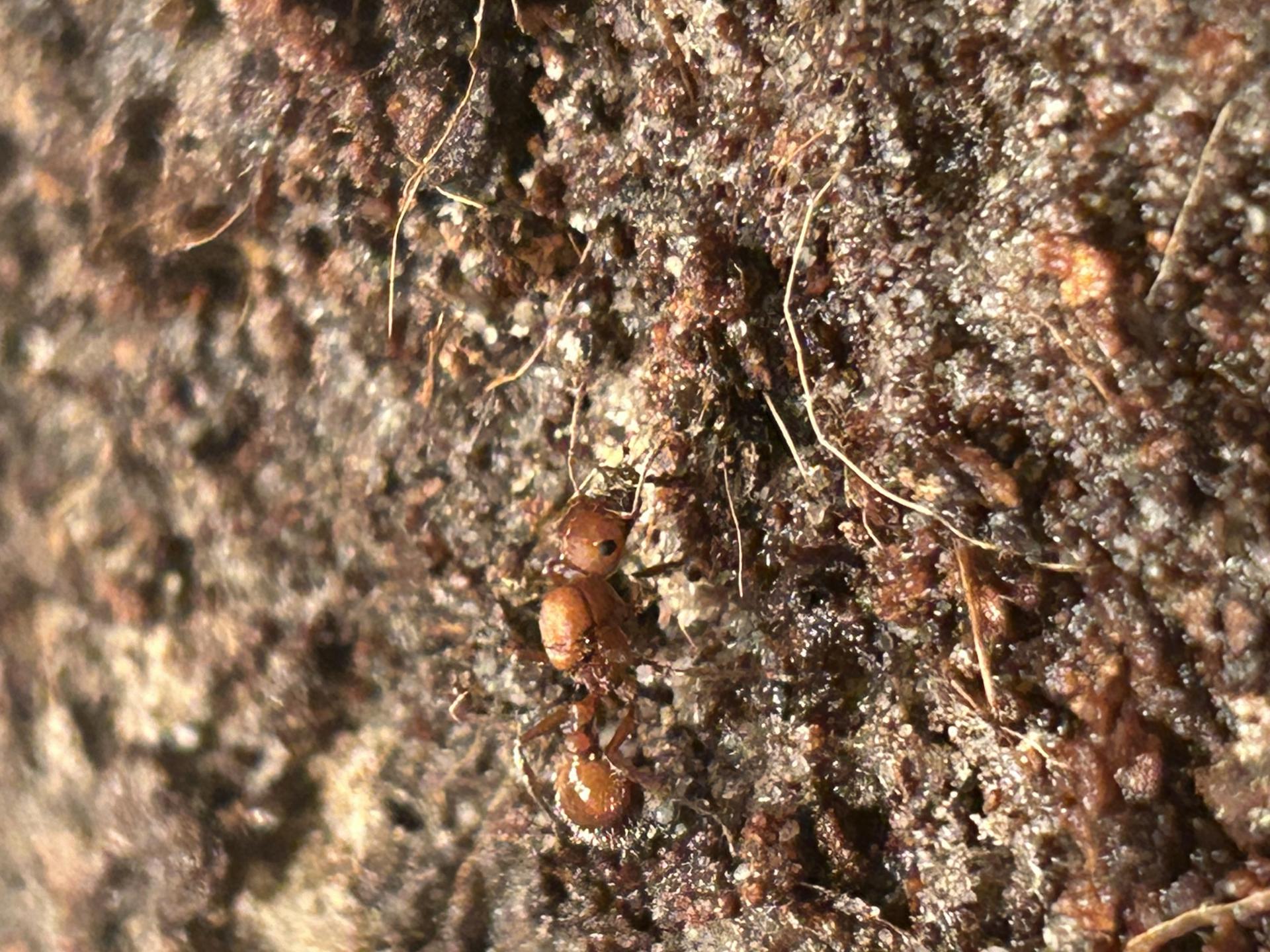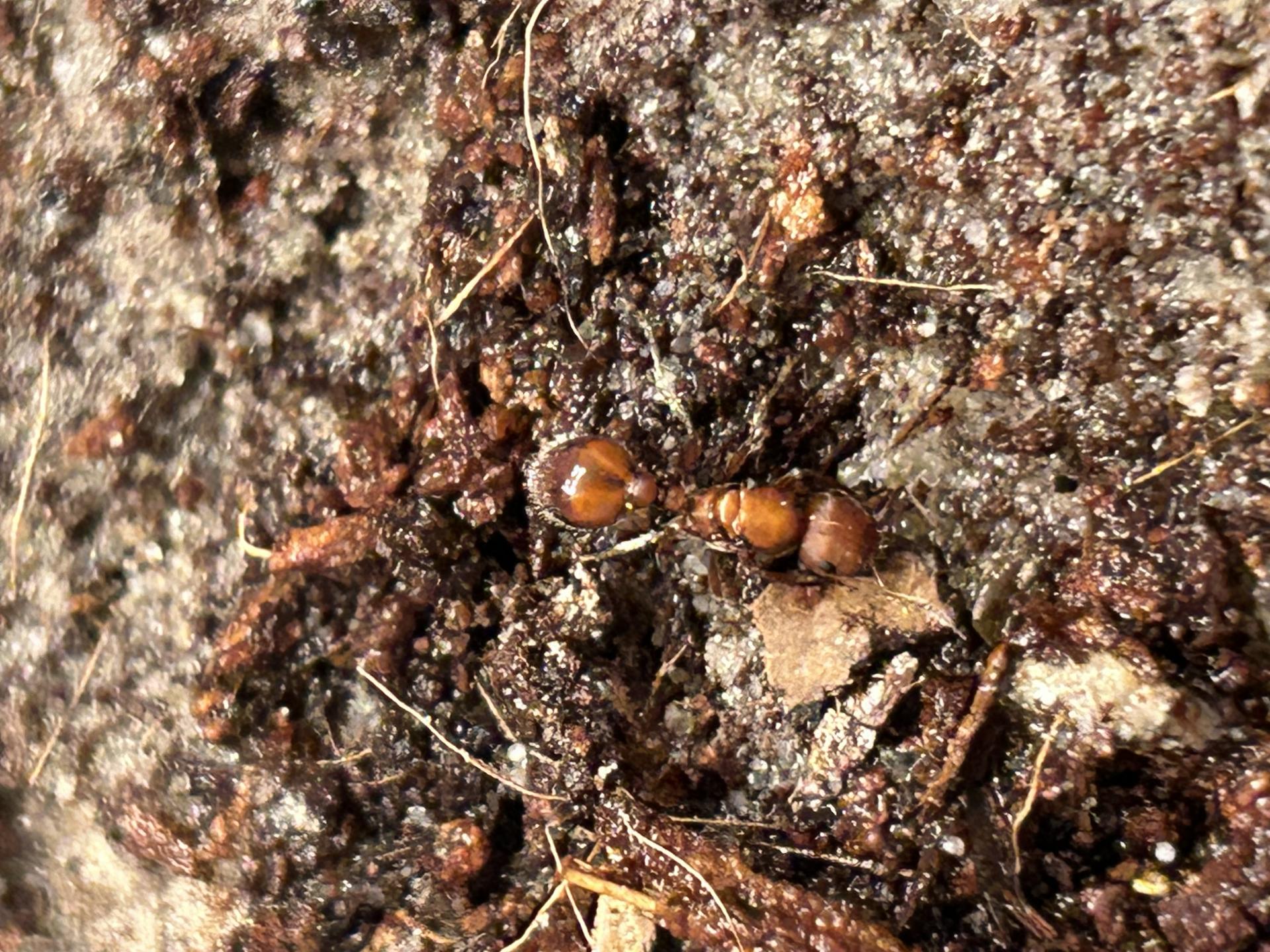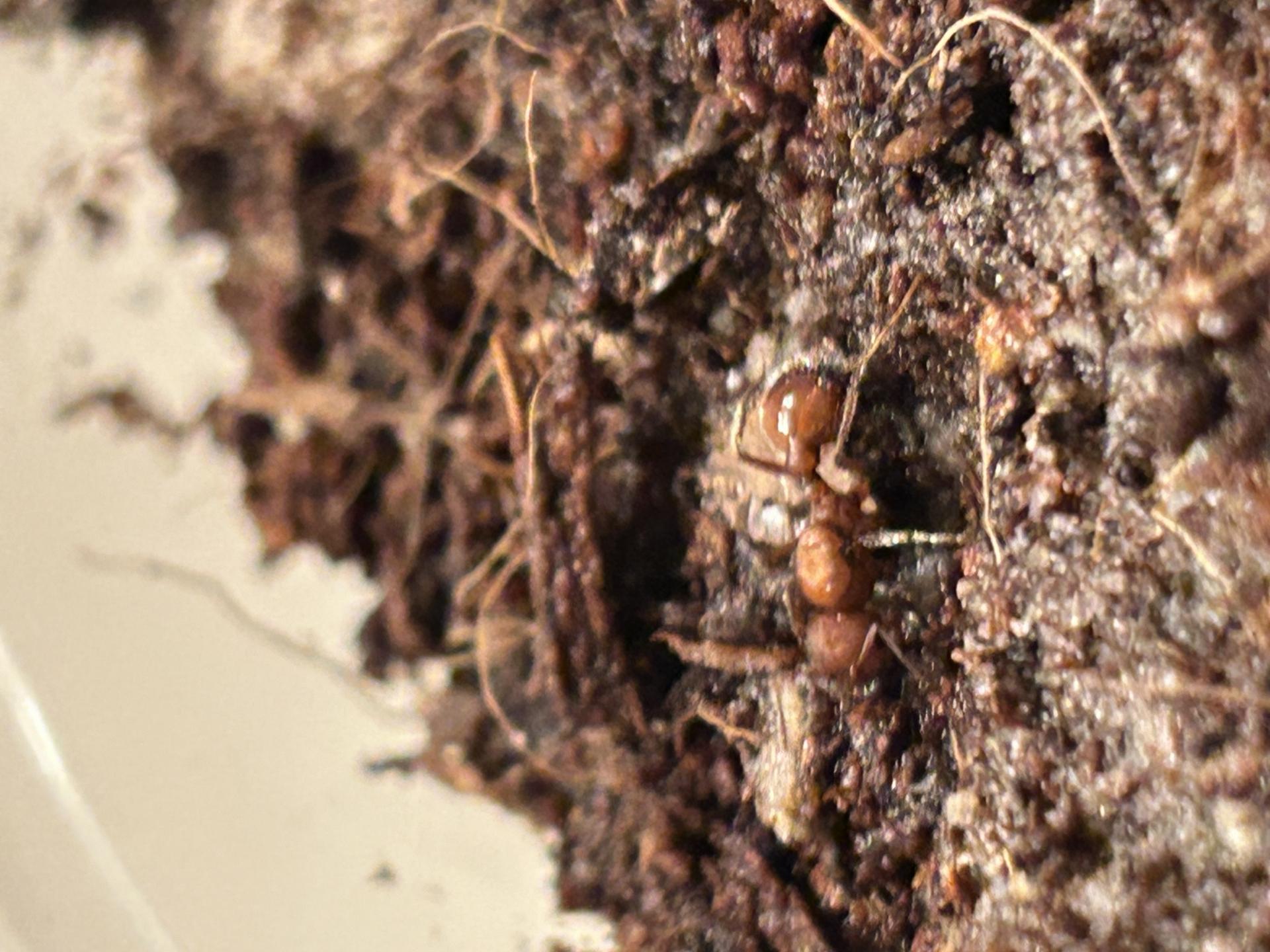- Formiculture.com
- Forums
- Gallery
- Members
- Member Map
- Chat

Pogonomyrmex ID
Started By
1tsm3jack
, Nov 5 2024 2:28 PM
6 replies to this topic
#1
 Offline
-
Posted November 5 2024 - 2:28 PM
Offline
-
Posted November 5 2024 - 2:28 PM
I have my one Pogonomyrmex queen that I never did get a definite ID for, so I figured I would try again, I collected her in Utah last summer right outside of Moab, right after about a day and a half of on and off rain/thunderstorms, originally I thought she was Occidentalis, and I’m still pretty sure she is but I wanted to get a definite ID, she is about 8–10 mm long.
- AntsGodzilla likes this
#2
 Offline
-
Posted November 5 2024 - 4:49 PM
Offline
-
Posted November 5 2024 - 4:49 PM
It is very likely that the queen is P. occidentalis. There is the slight chance it is P. salinus, but that doesn't seem likely.
Edited by ReignofRage, November 5 2024 - 4:50 PM.
- AntsGodzilla likes this
#3
 Offline
-
Posted November 5 2024 - 5:46 PM
Offline
-
Posted November 5 2024 - 5:46 PM
Ok thank you. What does Salinus even look like? Will I be able to tell once she has workers?
Edited by 1tsm3jack, November 5 2024 - 5:48 PM.
#4
 Offline
-
Posted November 6 2024 - 12:09 AM
Offline
-
Posted November 6 2024 - 12:09 AM
You need to look at the basal tooth on the mandibles. The basal tooh is the "top" tooth when looking at the mandibles "head-on." In P. occidentalis, the tooth will be upturned and in P. salinus, it will be flat with the basal margin. This is the case for both the queen and workers.
- Mushu and 1tsm3jack like this
#5
 Offline
-
Posted November 6 2024 - 8:45 PM
Offline
-
Posted November 6 2024 - 8:45 PM
You need to look at the basal tooth on the mandibles. The basal tooth is the "top" tooth when looking at the mandibles "head-on." In P. occidentalis, the tooth will be upturned and in P. salinus, it will be flat with the basal margin. This is the case for both the queen and workers.
To be honest I have no clue what you are talking about lol.
#6
 Offline
-
Posted November 7 2024 - 8:06 AM
Offline
-
Posted November 7 2024 - 8:06 AM
To be honest I have no clue what you are talking about lol.
P. occidentalis: note the way that the last tooth on the mandible is curved upwards
Whereas here the last tooth is pointed sideways, same as all the other teeth (this image is not P. salinus, but salinus should have similar mandible dentition)

- 1tsm3jack likes this
#7
 Offline
-
Posted November 7 2024 - 8:34 AM
Offline
-
Posted November 7 2024 - 8:34 AM
Ok thanks. So if I want to figure it out I need to have macro photos, I guess I'll never know haha. Care is basically the same probably right?
1 user(s) are reading this topic
0 members, 1 guests, 0 anonymous users



















